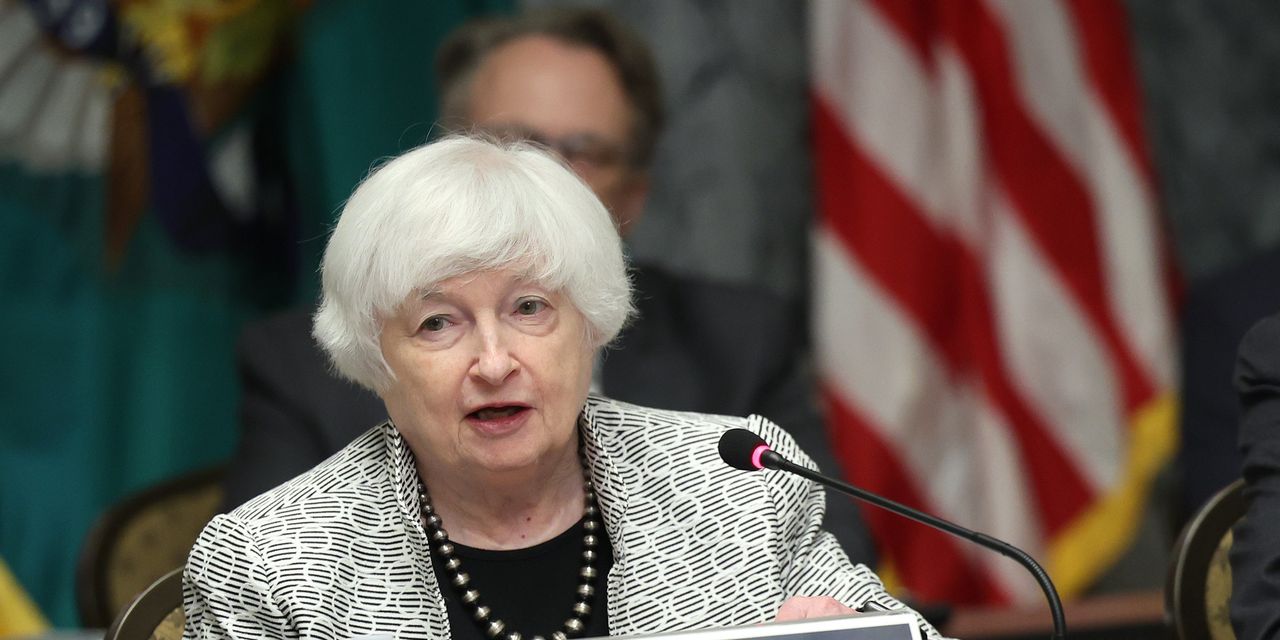The numbers: The federal budget deficit for fiscal year 2023 was $1.7 trillion, up $320 billion, or 23%, from a year ago, as the government’s revenues and spending both fell. The fiscal year ended on Sept. 30.
Key details: Revenues fell 9%, or $457 billion, in 2023, the Treasury Department reported, while government outlays or spending dropped a more modest 2%, or $137 billion.
The Treasury said the sharp decrease in revenue was due to lower individual-income tax receipts as capital-gains realizations fell, and to rising interest rates that cut the amount of money the Federal Reserve deposited at the Treasury.
Also read: Dow books worst week in a month, U.S. stocks close lower after a weekly rise in Treasury yields and oil prices
Spending to pay interest on the public debt rose 23% for the year, or $162 billion.
The gap for fiscal 2023 would have been wider had the Supreme Court not struck down President Joe Biden’s student-loan-forgiveness program in June.
The deficit was the third-highest on record, after fiscal years 2020 and 2021.
Big picture: The latest deficit figures arrive as the House of Representatives is paralyzed as it struggles to elect a new speaker, effectively putting Congress’s fiscal and all other business on hold.
Biden has asked lawmakers to approve more than $100 billion in aid for Ukraine, Israel and other priorities, but the near-term outlook for action is bleak. A partial government shutdown will ensue if a budget is not enacted by Nov. 17.
Meanwhile, Federal Reserve Chair Jerome Powell on Thursday suggested that rapidly rising U.S. debt levels could become a problem going forward, saying at the Economic Club of New York: “The path we’re on is unsustainable, and we’ll have to get off that path sooner rather than later.”
Read the full article here







